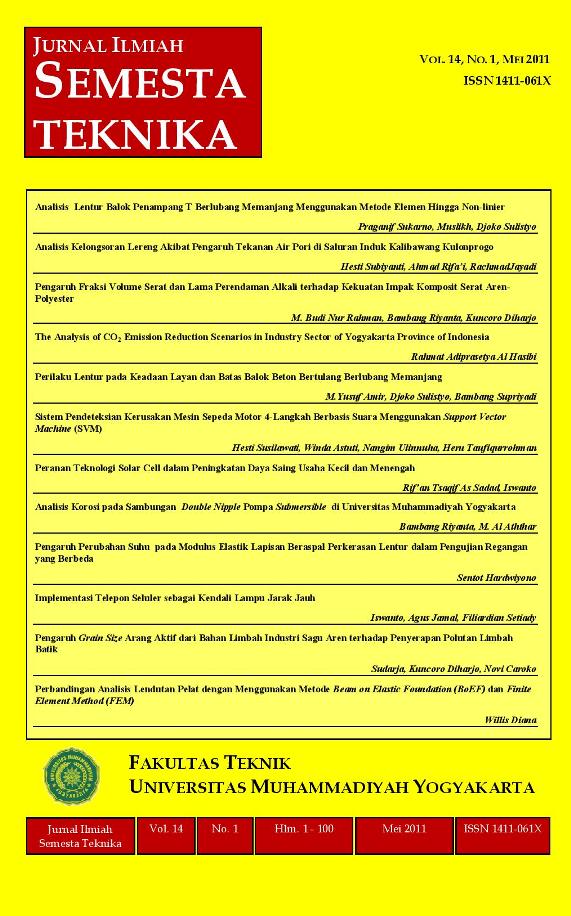Analisis Korosi pada Sambungan Double Nipple Pompa Submersible di Universitas Muhammadiyah Yogyakarta
DOI:
https://doi.org/10.18196/st.v14i1.586Abstract
Corrosion is the deterioration of metal or alloy due to electrochemical reactions with its surroundings. The current study was conducted to determine the types and causes of corrosion on the double nipple connection of submersible pump which is used to pump water flooding the generator room at Universitas Muhammadiyah Yogyakarta. Chemical composition test was conducted to determine the material characteristics. The type of corrosion was determined by visual observation and confirmed with microstructure test. Chemical composition test was also conducted to investigate the nipple surface whether it has already been corroded or not. The water flooding into the generator room was analyzed to dete4rmine its chemical composition. The result shows that the material of the nipple is dead mild steel consisting of 0.133% carbon. Selective corrosion occurs on the outersurface of the nipple destroying 96.6% of its galvanized coating, and further shifted into a bimetal corrosion which attack 0.14 mm or 5.1% of the nipple wall thickness. Differential aeration corrosion attacked the inner surface of the nipple wall, due to the presence of Cl which is observed in the flooding water.Downloads
Published
2015-12-16
How to Cite
M. Al Aththar, B. R. ,. (2015). Analisis Korosi pada Sambungan Double Nipple Pompa Submersible di Universitas Muhammadiyah Yogyakarta. Semesta Teknika, 14(1), 64–71. https://doi.org/10.18196/st.v14i1.586
Issue
Section
Articles
License
Semesta Teknika is licensed under a Creative Commons Attribution 4.0 International License.
Authors who publish with this journal agree to the following terms:
- Authors retain copyright and grant the journal right of first publication with the work simultaneously licensed under a Creative Commons Attribution License that allows others to share the work with an acknowledgement of the work's authorship and initial publication in this journal.
- Authors are able to enter into separate, additional contractual arrangements for the non-exclusive distribution of the journal's published version of the work (e.g., post it to an institutional repository or publish it in a book), with an acknowledgement of its initial publication in this journal.
- Authors are permitted and encouraged to post their work online (e.g., in institutional repositories or on their website) prior to and during the submission process, as it can lead to productive exchanges, as well as earlier and greater citation of published work (See The Effect of Open Access).









